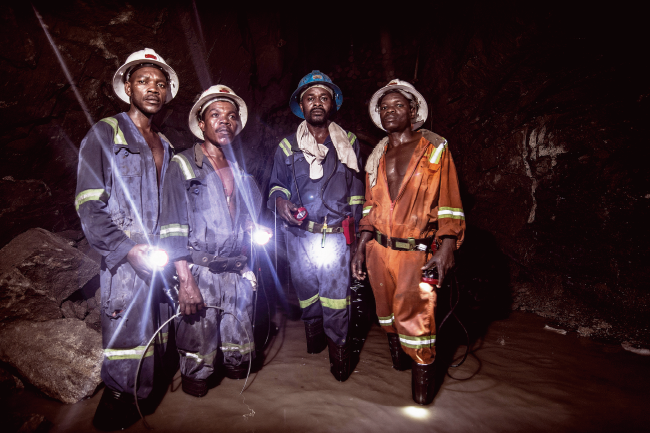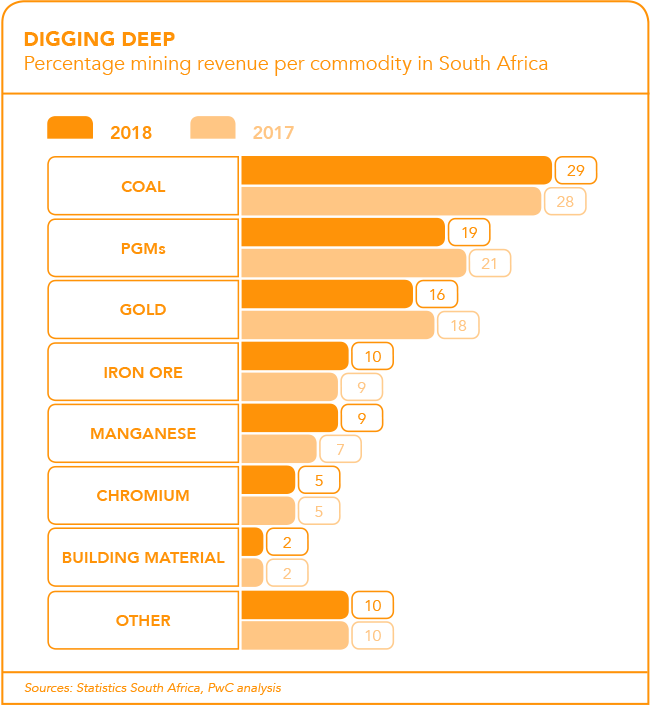In the second half of 2018, the South African mining jurisdiction finally achieved a degree of regulatory stability last seen in 2014. Appointed in February 2018, Mineral Resources Minister Gwede Mantashe gazetted a final version of the fraught Mining Charter, which lays out the obligations of the sector in terms of the state’s BEE requirements. Earlier in the year, he also scrapped the proposed amendments to the Mineral and Petroleum Resources Development Act that had generated insecurity in the industry since the first bill was passed in 2014.
The details of Mantashe’s charter are open to criticism. However, industry representatives, the Minerals Council South Africa (MCSA) and a few of the biggest players have voiced a degree of satisfaction. They believe that Mantashe, unlike his much-criticised predecessor, Mosebenzi Zwane, showed some capacity to listen to their concerns and incorporate them into the final document. The version of the charter produced in 2017 had provoked an uproar and threats, on the part of the industry, to engage with the minister only through the courts.
CEO of the MCSA Roger Baxter says that ‘this third iteration of the Mining Charter is the product of significant engagement and negotiation that has taken place. Minister Mantashe certainly opened up to engage with all different constituents and stake-holders and partners, and he’s taken on board the views of everyone … and we are certainly broadly supportive of the charter’.
The charter’s headline principle is that mining licence holders are obliged to pass on 30% of ownership to black-owned South African firms. This is an increase over the 26% required by the first (2002) and second (2010) versions. However, it is offset by the government’s recognition of the ‘once empowered, always empowered’ tenet. In other words, even where black owners have cashed out their shareholding, it will still be recognised for empowerment purposes.
Criticisms of the charter revolve around the compliance and direct costs, especially for the junior mining sector and exploration companies. Even the MCSA, which is sometimes accused of speaking only for big mining firms, is unhappy with the beneficiation and supplier development conditions it imposes. The 2018 charter requires mining companies to subsidise black-owned manufacturing entities by offering ‘mineral ore […] at a discount to the mine-gate price’. This ‘developmental price’ is experienced as an additional cost by the mining industry and is thus a disincentive to mining investment.
The charter lists precise requirements for procurement and supplier development. It requires that 70% of total mining goods procurement spend and 80% of spending on services should be sourced from South African companies. In procurement, 21 percentage points of spending must be on locally manufactured goods, produced by black-owned companies, five percentage points from black female-owned companies (of which 51% can be offset against ‘youth suppliers’) and 44% on South African goods produced by BEE-compliant companies. These are new conditions, not specified in either of the two previous iterations of the Mining Charter.
Baxter argued in a radio interview in October that the organisation had reservations about ‘how practical’ the effective 70% local capital equipment requirement is, and suggested that exemptions are needed.
Anglo American CEO Mark Cutifani, however, is happy that the charter has made it possible for the company to invest in South African mining again. ‘[Under the earlier Zwane draft], quite frankly, that money was at risk,’ he says. Now, ‘while we don’t have all the things we would like to see, [the charter] provides the foundation for significant investment. Confidence has been returned’. For decades, Anglo American was considered the bellwether stock in South African mining. Although it no longer dominates the sector the way it used to – having exited local gold mining; cut its platinum mines back to a single (low-cost, high-quality) asset; and sold its thermal coal mines to the black-owned Seriti Resources – it is still a significant voice.
It is important then that Anglo American is putting its money where its mouth is. At President Cyril Ramaphosa’s South Africa Investment Conference in October 2018, the mining giant made the single-largest investment pledge tabled. It promised to invest ZAR71.5 billion in existing mining operations. One-third of this is to go into Venetia diamond mine, where the company is busy transitioning from an open-pit to an underground operation.
The remaining investment capital is intended to go into iron ore (where Anglo American is the dominant South African producer through its 70% shareholding in Kumba Iron Ore), manganese and coal, according to the company. Ramaphosa deliberately sold mining as a ‘sunrise’ sector at the South Africa Investment Conference. ‘The revised Mining Charter has been finalised. This is the outcome of extensive and meaningful consultation between government, community, labour and business, and represents evidence of our commitment to solving the challenges in the sector collaboratively,’ he said.
Other companies chose the Investment Conference to indicate that they accepted the Ramaphosa government’s bona fides and were willing to invest too. After Anglo American’s announcement, Vedanta Resources promised to invest ZAR21.4 billion in a 250 000-ton zinc smelter at Gamsberg in the Northern Cape. Beneficiation activities such as smelting are a step further up the value chain than the basic mining activity of rock breaking and thus represent a greater degree of faith in the enabling environment.
However, smelting’s biggest risk factor is the cost of electricity and this represents one of the two major headwinds facing the South African jurisdiction, alongside labour relations. Electricity costs have risen some 300% since the 2008 crisis closed South Africa’s mines. While electricity supply parastatal Eskom is careful not to put miners at risk these days, security comes at a cost. Eskom has applied for a further above-inflation tariff hike (an average of 15% annually for three years) beginning in 2019. High electricity tariffs are especially damaging to deep-level mining, particularly gold, where they comprise more than 20% of costs (due to electricity-operated water-pumping expenses).

Labour relations, however, remain a significant complication when it comes to mining investment in South Africa. Job losses were considerable in 2018, especially in marginal gold mining and platinum operations. In October, Gold Fields announced it would be retrenching about one-third of its workforce at the highly mechanised South Deep gold mine in an effort to finally achieve profitability in the operation. Gold Fields has spent a total of ZAR32 billion on the mine since taking it over in 2006 but has lost ZAR4 billion over the past five years alone. At the time, the capital-intensive South Deep operation was regarded as epitomising the break with the traditional South African model with its extensive use of large quantities of low-cost labour.
The dominant union on the mine, National Union of Mineworkers (NUM), responded by going on strike while management insisted it wanted to resolve the matter through negotiation. There were allegations that the strike had been accompanied by intimidation and threats of violence. ‘Individuals violently tried to stop people from accessing the mine,’ according to an online statement by Gold Fields South Africa head Martin Preece and South Deep mine manager Benford Mokoatle. ‘South Deep faces an untenable financial position. Any disruptive action has the potential to seriously jeopardise the future of the mine.’
A bigger, more disruptive strike has been experienced by Sibanye Stillwater on its marginal Beatrix, Driefontein and Kloof gold mines. There, one of the unions, the Association of Mineworkers and Construction Union (Amcu) rejected the three-year wage agreement offer that the other three (NUM, United Association of South Africa and Solidarity) had accepted and led 15 000 of the company’s 32 000 miners out on strike. Approaching year end, the issue was still unresolved, an attempt by the company to have the strike indicted had failed and four workers had died.
Whatever the merits of the respective positions of miners and management in each instance, these are disruptions that mining companies would prefer to avoid. Most managers believe they are rooted in and exacerbated by rivalries for membership numbers, especially between Amcu and the NUM.
Even with the disagreement over the Mining Charter resolved, South Africa still offers a mixed bag for prospective mining investors. Big mining companies already invested in the jurisdiction can expect to cope with its complexities.








